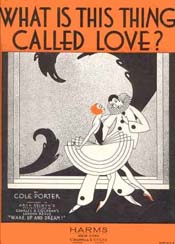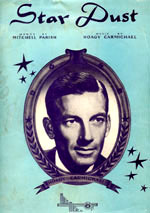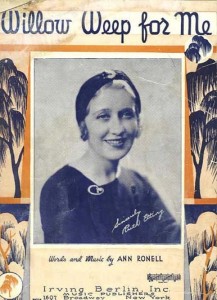Jazz musicians have always shown a preference, both live and on recordings, for a special set of songs that have come to be known as 'jazz standards.' The majority of these songs were not originally conceived as vehicles for jazz improvisation, but were written for the Broadway stage, motion pictures or as "Tin Pan Alley" pop hits. Most were created during the golden age of American songwriting, generally considered to be the years between the World Wars.Today's jazz artists reach back again and again to this fertile period for inspiration.
This week on Riverwalk Jazz The Jim Cullum Jazz Band and their guests perform the standards most often recorded by jazz musicians. Musician, historian and jazzstandards.com contributor Chris Tyle helped us put this week's broadcast together, giving us the low-down on how these tunes became the favorites they are today.
Even though songs by more recent composers like The Beatles, Stevie Wonder, and a long list of modern jazz artists have found their way into the current jazz canon, the old standards still form a sort of "bedrock" repertoire of jazz. For example, "Stardust"—a tune written some 80 years ago still shows up with regularity on jazz CDs. Hoagy Carmichael first composed and recorded the tune in 1927. Initially conceived as a lightly swinging instrumental, and with a melody inspired by the playing of Jazz Age cornetist Bix Beiderbecke, the tune went on to become one of the most recorded in history—with over 1,800 recordings—and today ranks #12 on jazzstandards.com.
Rich Conaty, host of the radio show The Big Broadcast on WFUV-FM in New York City, often points out the difference between the way songs reached public consciousness in the pre- and post-war eras. The key concept, he says, is that in the pre-war years, pop music was "tune-driven," that is, tunes would become popular through multiple recordings and live performances by a number of artists and bands, often resulting in a rich variety of interpretations—many by the most important jazz artists of the day: Louis Armstrong, Bunny Berigan, Coleman Hawkins, Billie Holiday and Fats Waller.
By the 1960s, a song's popularity was measured by the sales of one unique recorded performance—often by the composer himself—resulting in today's "record-driven" pop-music business.
The Jim Cullum Jazz Band and their guests continue the tradition of re-interpreting the old songs in the hot-rhythm jazz style that was current when those songs were newly minted—though often in their own new arrangements.
Photo credit for Home Page: "Willow Weep for Me" sheet music,1932. Image courtesy songbook1.wordpress.
Text based on Riverwalk Jazz script by Margaret Moos Pick ©2006




